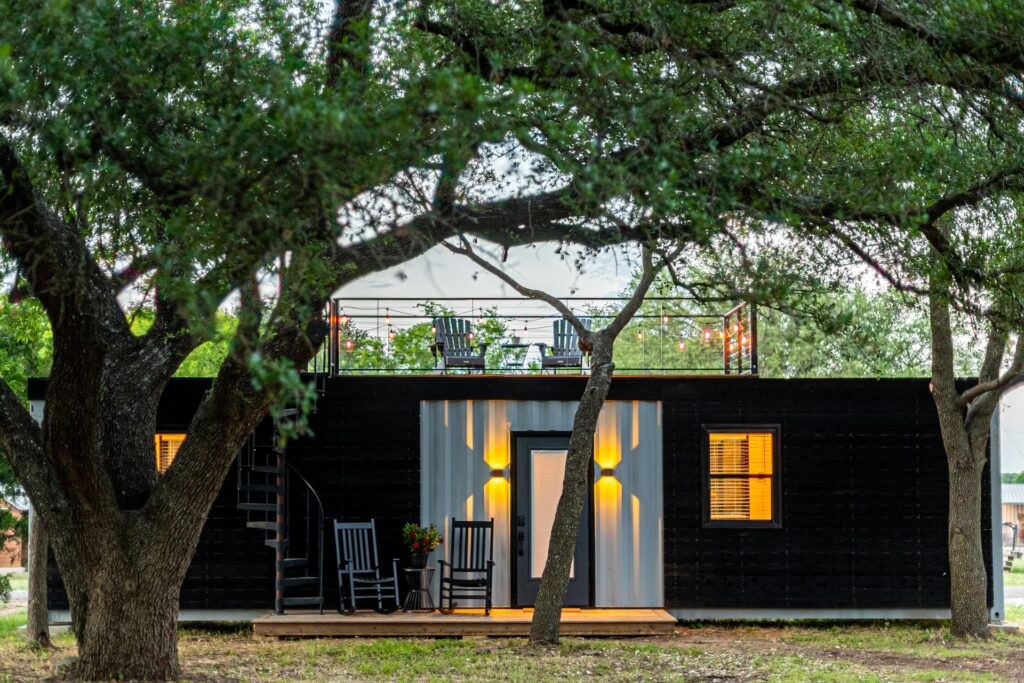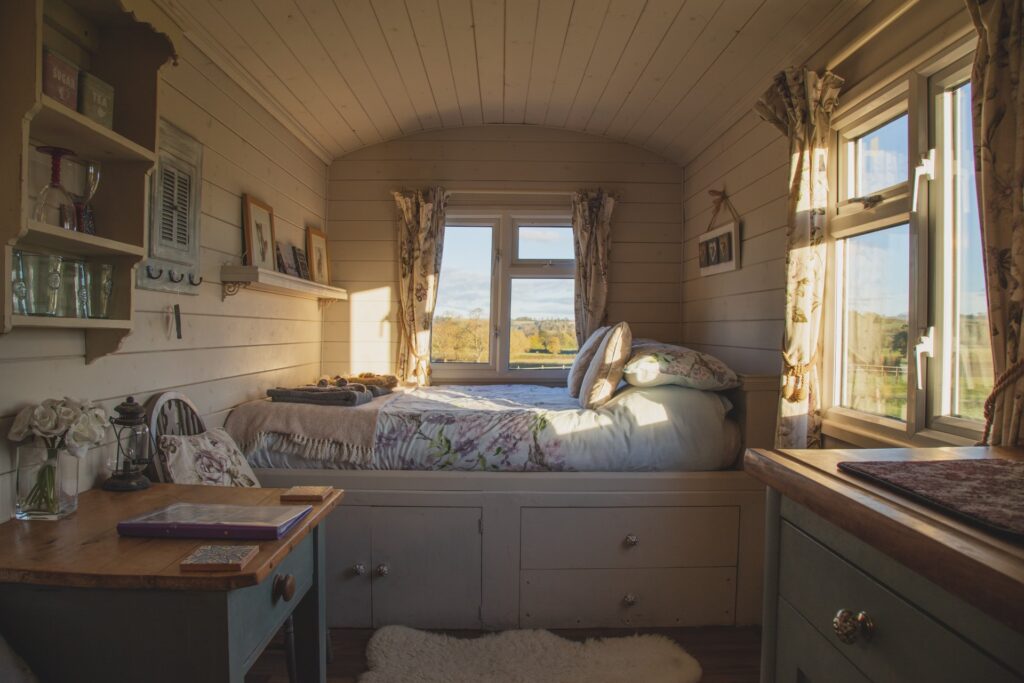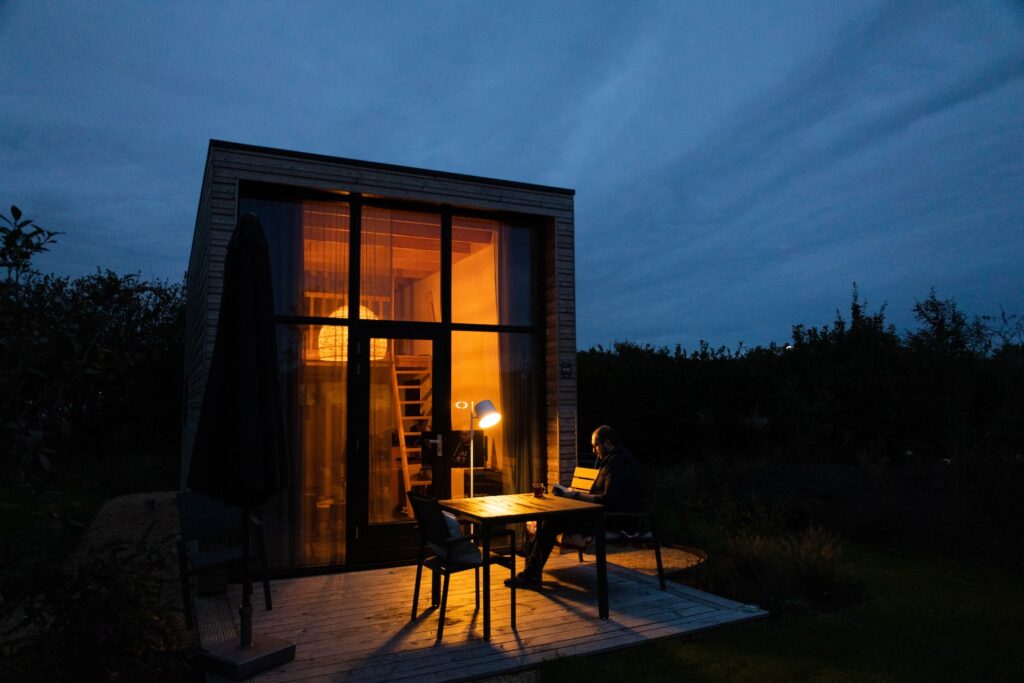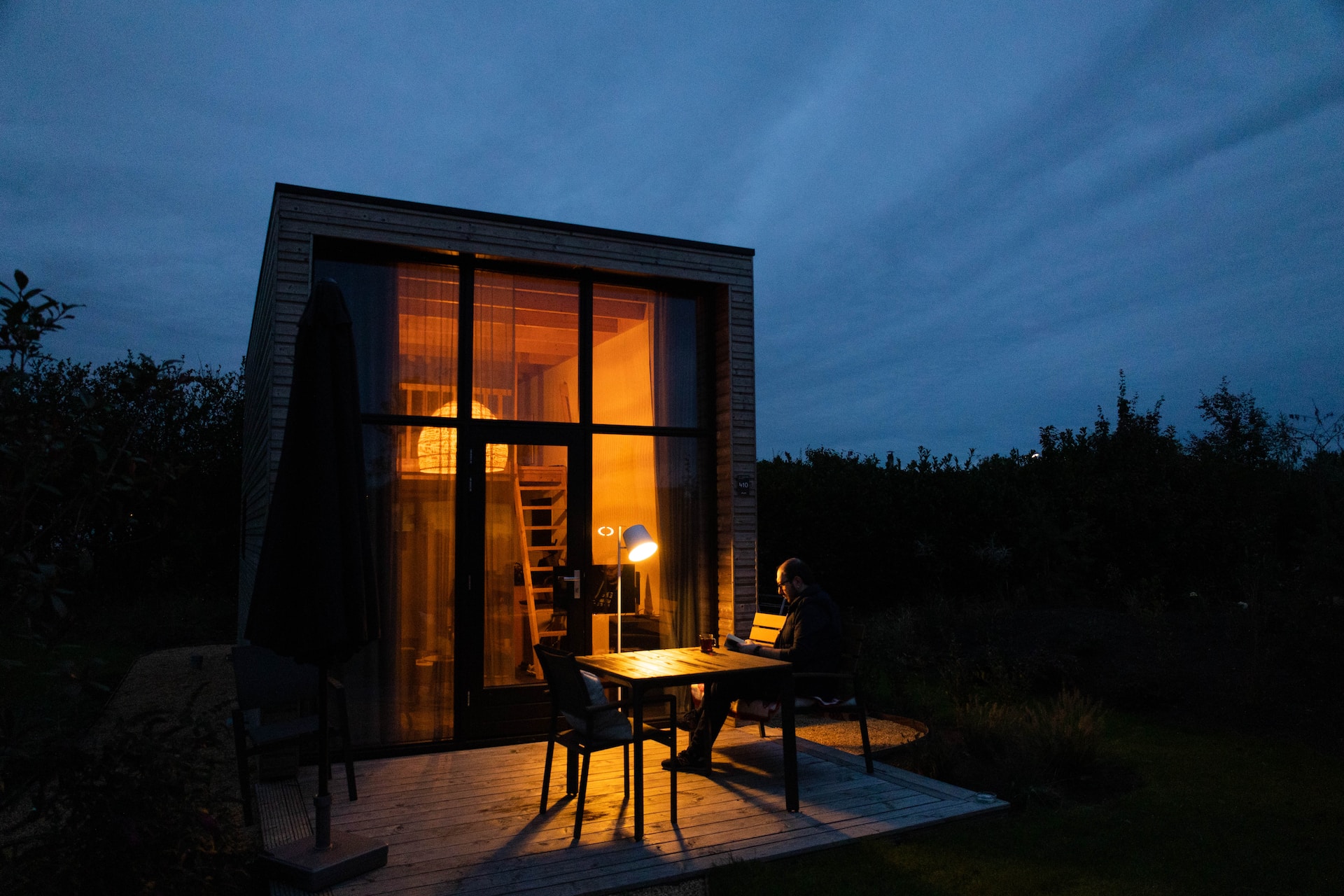
We are reader-supported. When you buy through links on our site, we may earn an affiliate commission.
The tiny house movement represents a shift towards a more conscious and intentional way of living. People who adopt the tiny house want to downsize, reduce their carbon footprint, live more sustainably, and focus on what truly matters.
When Did the Tiny House Movement Start?
It all starts with Jay Shafer, affectionately known today as “The Tiny House Guy” or “The Godfather of Tiny Houses.” The tiny house movement dates back to the 1990s, when Shafer built a tiny house to prove that small houses were safe and efficient despite being illegal. For his architectural adventure, he built a little country chapel with a pitched roof, a crimson door and elegantly worn wood. It was less than the minimum size specifications for a house required by most building rules, at around 12 feet tall and 8 feet wide.
After he built his house, the demand for tiny homes shot up and he started his own construction company. And with that, the tiny house movement began. It became so popular that a network of books, documentaries and reality series like “Tiny House Nations” brought the move into the mainstream. For the past few decades, the home industry has seen people moving into buses, container apartments and other types of tiny homes.
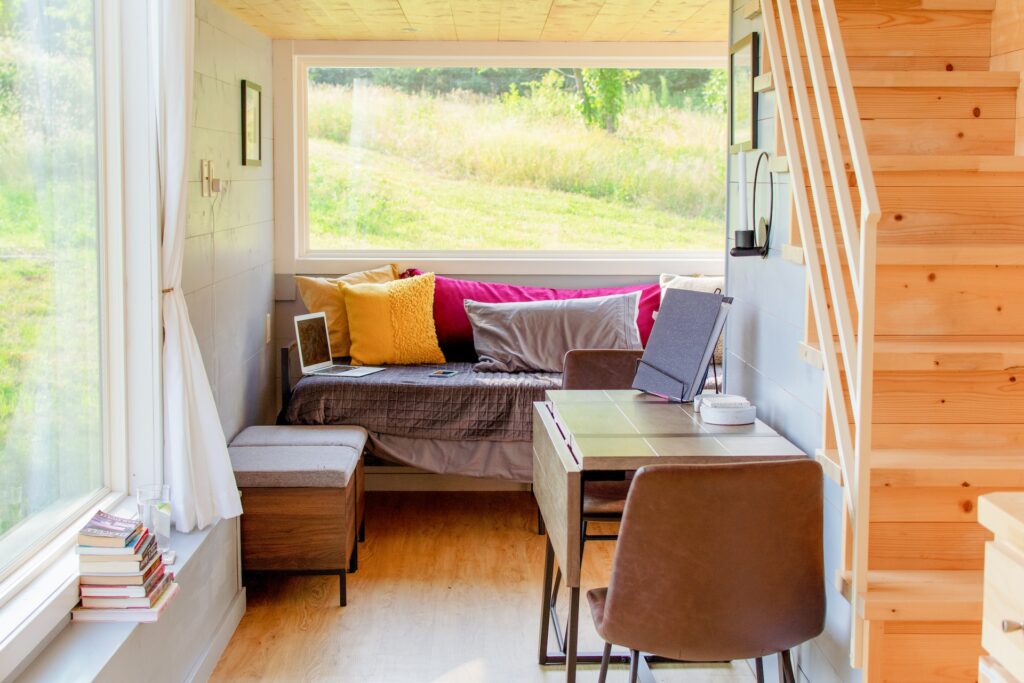
Why Do People Choose Tiny Homes?
At the heart of the tiny house movement is a simple philosophy; most who chose to move into tiny homes chose the option for freedom, sustainability and financial freedom. In the past few decades, tiny homes have become popular with millennials looking for affordable housing. Some do it as a transition to buying their own property. Others do it for the peace of mind, connection to nature and close-knit communities that it offers, especially if they shack up on rural land. Here are some of the biggest reasons people choose to build tiny homes:
Cheaper cost of living – Living in a smaller place frequently results in cheaper utility costs.
Mobility – Since many tiny homes are constructed as trailers, they may allow for easy relocation.
Lifestyle simplification – Less room can result in less clutter, which aligns with the minimalist and conscious-consumption lifestyles. Tiny homes can also have a loft or numerous stories to maximize space. Furniture and storage options have several uses. For example, A bed or couch base can double up as storage space.
Eco-friendly – People often use sustainable and prefabricated building materials, which allow for more customization and fewer emissions during the building process.
Tiny home living is an great option for many people. For some it may clash with their desires or needs for a living space. They may encounter issues like:
Space restrictions – The smaller living area may make storing items, entertaining guests, or carrying out household chores difficult.
Utilities – Getting reliable water and power can be difficult, especially for compact mobile homes.
Legal and zoning concerns – Only some regions are suitable for tiny homes. There are also laws and regulations that require time and money to overcome.
The Upfront Cost – You will need some money upfront to cover costs like property fees, electricity and plumbing for a house that’s up to code.
The Politics and Commercialization of Tiny Homes
As with any trend, commercialization is sure to follow. Tiny homes are perfect for Airbnb hosting since they present a unique living experience. Tiny Airbnb homes are Instagram-worthy, and people will pay decent amounts to try it out.
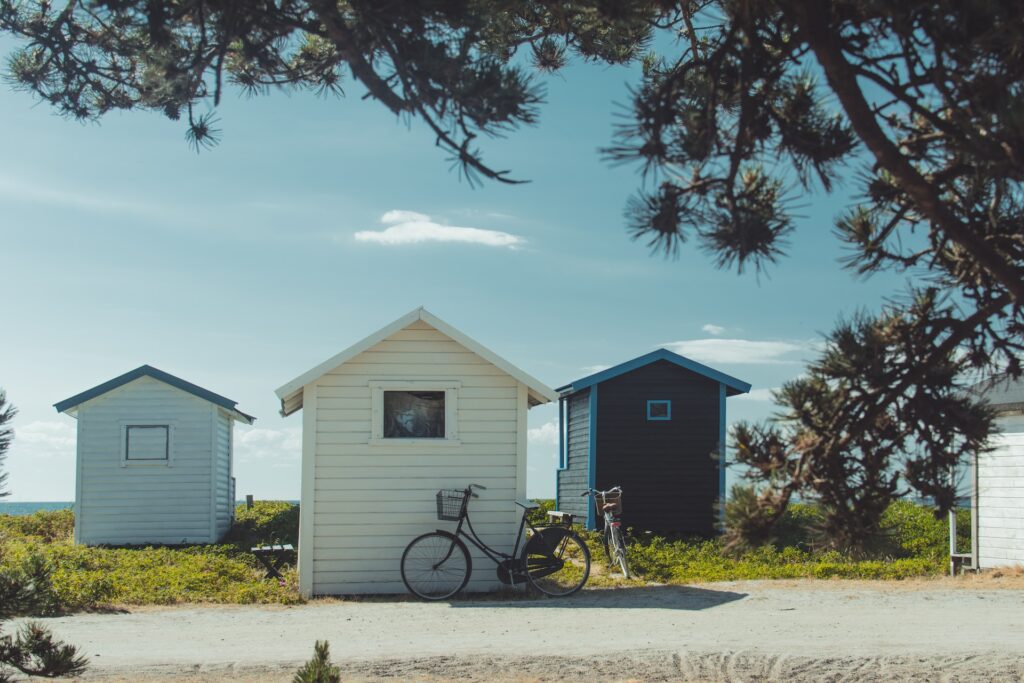
However, the glamour of a one-time experience dissipates when you think about the strict zoning laws for lower-income households. Most tiny homeowners will tell of their experiences trying to find the right property to settle on. Sometimes, local zoning laws and building ordinances can be obstacles.
In addition, individuals who need tiny homes for their affordability face prejudice from city planning because of their low-income status.
While that may be true, there are also changes on the horizon. Some cities have changed ordinances to accommodate tiny homes in some lots and small urban areas.
Since tiny homes are more accessible and more affordable, they present a solution for the housing crisis. The housing crisis affects 582 000 Americans currently and needs innovative solutions. This requires state and non-profit organizations to intervene. For example, some nonprofit organizations have built tiny home villages for homeless and displaced Veterans. In California, Governor Gavin Newsom announced that the state will build 1,200 tiny homes from $30 million dedicated to decreasing homelessness.
Types of Tiny Homes
Here is a list of some of the tiny homes you can build.
Tiny House From Scratch
For people with experience in construction, building from scratch provides the greatest degree of personalization. They can design a tiny house that suits their preferences and needs. To build a beautiful and safe home, they will need to be cautious with safety rules and building up to code.
Tiny House Kits
Tiny house kits typically come with most of the building supplies you’ll need. They come with windows, doors, walls, and hardware, along with step-by-step instructions. They are a good option for DIY enthusiasts who don’t want to do everything themselves.
Mobile/Bus Tiny Homes
These homes fall under mobile tiny homes, which usually have wheels and no structural foundation. Many people have bought buses and removed the seats to make space for beds, living areas and kitchen complete with plumbing and electrical systems. People who choose this option often travel with their buses and use them as accommodation wherever they go.
Pre-Built Tiny Homes
Pre-built tiny homes may be the easiest to purchase (albeit they are often more expensive). Companies that focus on building tiny homes frequently provide a variety of designs with different modification choices. This enables people to modify their base models to better meet their desires and needs. These tiny homes range from houses made out of containers, prefabricated aluminum panels or other building material put together by a company.
Tiny Home Living
The tiny house movement continues to inspire people to rethink their priorities and challenge societal norms surrounding housing and consumerism. It has also led to the development of tiny house communities, where like-minded individuals come together to share resources and support one another in their pursuit of a simpler, more sustainable lifestyle.







